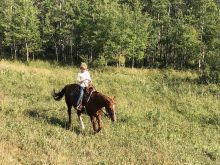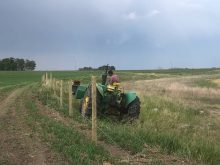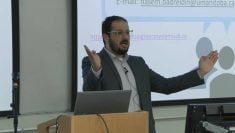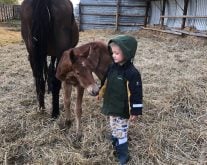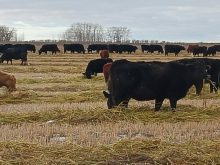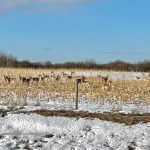What was at first a distant possibility, a fragile idea, discussed over scotch and left to simmer has become something much more. It’s now real. It is as real as a custom applicator killing the pasture grass. It is as real as me looking for a disk to break the ground before it freezes. It is as real as an agronomist’s report detailing soil types and potential drainage concerns. It’s happening, folks. I’m prepping 120 acres of pastureland for crop production. And, right now, I have more questions than answers.
Read Also

Claas brings 1000 Series SP forage harvesters to Canada
In mid-August, Claas unveiled its new line of Jaguar forage harvesters at an event in Visalia, California, deep in the heart of that state’s dairy region.
I’m an introvert. I’m quick to judge, and I am often skeptical. But that all dissolved and turned to mush when he told me that after a conversation they had as a couple, they have decided to rent me the land for a few years, giving me time and the opportunity to save the money needed to purchase it. They want to help me out. They want to see me, a “young” farmer, get off the ground.
I can come to this meeting armed with cost of production documents and an informal offer to purchase. I would talk about high input costs, mediocre commodity prices, and how on an average-yielding year, I’d still have to find a few thousand dollars elsewhere to make the semi-annual loan payment. It was to be a sob story for the ages. There would be tears, and hugs, and everyone would feel sorry for poor ol’ Toban.
But it didn’t happen that way. It didn’t need to. Instead, two wonderful human beings decided they wanted to help me succeed as a farmer. It’s the kind of gesture anyone who receives doesn’t feel they deserve. It forces you to retreat into yourself and catalogue all the things you’ve done in life that make you unworthy of such unnecessary kindness.
If this is a sign I should be farming, I’ll suspend disbelief in such things as signs, accept it as that, and get to work.
I started with the Internet, typing something like “how to break pastureland” into the search bar. The Combine Forum was a few results down and seemed the best fit for the basic information I was after. It was a good read. Others have done this. Others have wrestled with these questions. It may have only muddied the waters but it’s always nice to know you’re not alone.
Looking at the field, it takes a working imagination to see it as cropland. You have to imagine it without the fence posts, without the grass, without the weeds, without the pallet and broken-up sidewalk block, without, without, without. Then, once you’ve stripped the area of most of what it currently has, a field of soybeans grown on smooth, fertile black soil starts to take shape.
They (they, being everyone providing ag-related services) always ask, “What’s your legal?” I wish I could remember. I rarely do. I have two now, you see. I scramble to find it in an archived email. If not there, then a thousand finger scrolls into an old text thread with the landowner. Eureka. I send it, and commit the number to memory, and make my way eight miles west where I’m to meet the custom applicator.
He parked by the approach, and I gave him a tour of the land. It would’ve been hard to make sense where to spray without a walk-through. “Watch out for that fence post, those trees, and that pallet,” I said. “This is the neighbour’s property, so don’t spray there, and over there is one small tree.”
He chuckled a bit, told me that land is land, and that he knew of a few farmers who had tilled pasture land and had a great crop the next year. I thanked him for that story, and left him to spray. I stayed to watch for a bit, thinking about how nice it would be to own that sprayer, and how bizarre it is that this is actually happening. I’m spending real dollars on this land.
To break it, I’ve read a spectrum of options: deep till, disk, deep till twice then disk, don’t do either and direct-seed canola. I have time to decide. The chemical will take a while to do its work. If I can work it this fall, it’ll only be later, just before frost, I’m guessing. Otherwise, it’ll have to wait until spring.
I don’t know when I’ll get on it to till, this year or next. I don’t know which implement will work the best. I don’t know what’s underneath the surface and how fertile it is. I don’t know what I’ll grow next year.
I’m excited, about the land, about the unknowns, about working together with some very nice people, and about the meeting with an agronomist I’m currently running late for.



